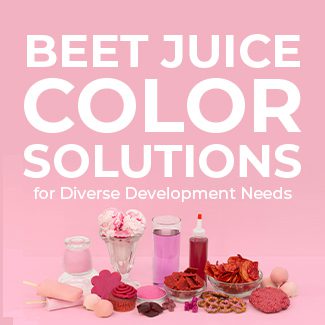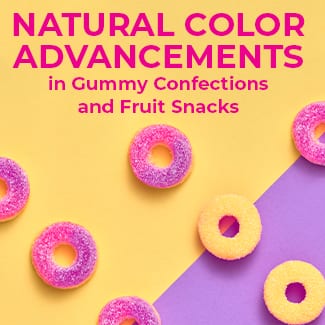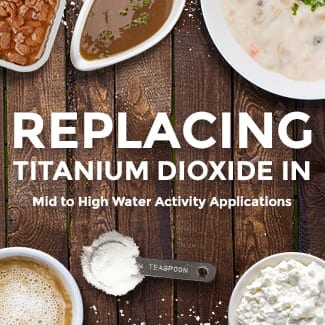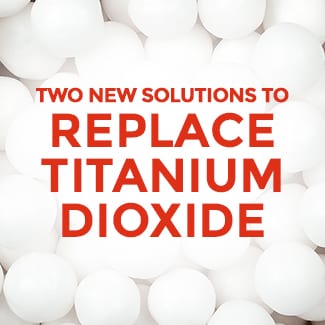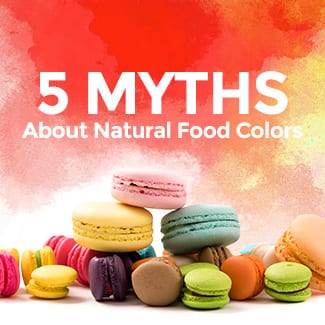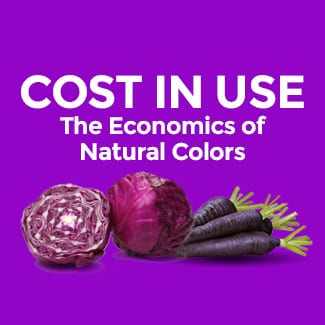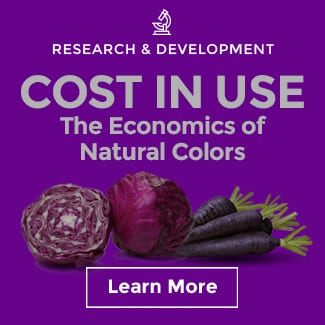Super-Natural Heat Stability from a Vegetable Juice
Several years ago, Starbucks came under fire for using carmine in some of their beverage and red velvet baked goods. Despite its status as a non-certified or natural color, many of their customers found the use of ‘bug juice’ a turnoff. The company then announced their transition away from the color. Of course, carmine is also not Kosher or Halal, so its use in food and beverage products had some drawbacks anyway.
Why is this so relevant today? As most of you know, a wave of consumer packaged food companies and retailers have recently announced their intention to convert from certified synthetic colors to those from natural sources. The list includes Mars, Mondelez, Kellogg, Aldi, and General Mills.
Advances in natural color performance relative to artificial colors have been impressive. However, until now, some major gaps existed in the natural color technology landscape. A truly heat stable natural red from botanical sources for baked goods and dry grocery products was among the biggest missing technologies.
The pH Problem
Baked goods and many dry grocery products typically are in the 5-7 pH range. During baking or heat processing production, the pH can rise even further. While nature provides us with several red anthocyanin options, these sources will shift from red to purple under these pH conditions.
The Maillard Reaction
French scientist Louis-Camille Maillard first explained what happens when amino acids react with sugar at elevated temperatures about a century ago. Beet is a logical alternative to anthocyanin colors in a neutral pH environment. Alas, because of the Maillard effect, beet browns during the baking or heat step of manufacturing. This issue can also arise during high shear mixing or extrusion, particularly in cereal or pet food applications.

Sweet and Savory Baked Goods
Off-Notes and Texture Problems
Because of the much higher usage rates typically required for natural colors from beet and other vegetable juices, off-notes can be another issue. Additionally, in many baked and packaged food applications, the high usage rate will impact texture. This effect usually means less rise than desired in the final product and crumbling in some applications.
Partly because of the Starbucks story but also due to growing consumer demand for natural color sources, we began working on finding a solution to the heat-stable red challenge. After several years of hard work, we finally have a solution—a natural vegetable juice that delivers bold, vibrant red shades that stand up to heat in a neutral pH environment. We call it SupraRed™ and it provides a number of key advantages including the following:
- Unprecedented heat stability
- Clean and simple ingredient labeling
- Low usage rates
- Kosher and Halal
- Broad range of shades possible in combination with other natural colors

Extruded Cereal

Plant-Based Meats
This project was an extremely gratifying for the R&D team at Sensient. There were many dead ends along the way, and for a time, I wasn’t sure we were going to find success.
If you have any questions or projects where you need some assistance, please go ahead and set up a consultation or reach out to me directly. Additionally, you can always go ahead and request a sample of our SupraRed or any other color here.




